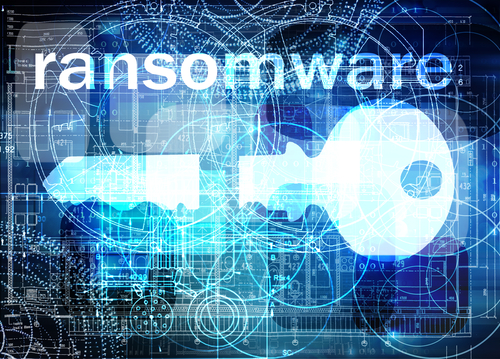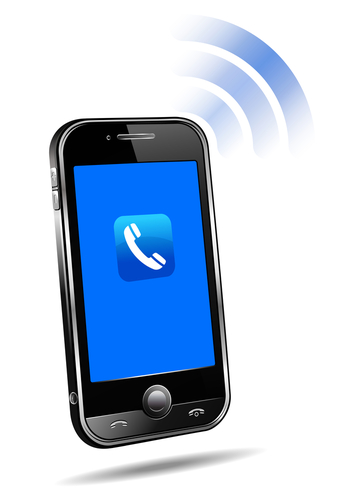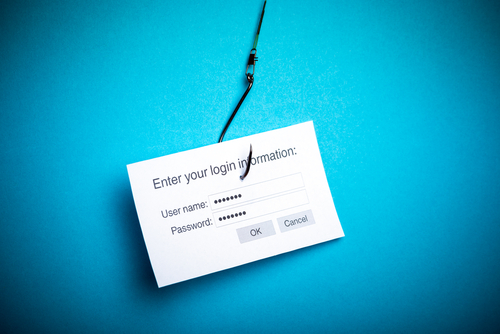December 30th, 2013

The malware being used by hackers and their tactics are changing all the time. Throughout 2013, we’ve seen new threats emerge. Robert Lemos of Dark Reading lists some of the advanced attacks we saw in 2013 and how businesses should be changing their security infrastructure to protect against similar attacks in the future.
This form of ransomware began infecting users over the summer. Since then, it claimed an estimated 200-thousand victims in its first 100 days in the wild. Cryptolocker encrypts files stored on a user’s computer and demands a ransom before giving the key to decrypt. For businesses, educating users on how to avoid malware is imperative. Unlike some other forms of ransomware, Cryptolocker is not a bluff and will encrypt and destroy files if no payment is given. The best way to prevent that damage is to avoid malicious files from ever reaching your network.
This year, we saw more instances of attacks filtering through service and technology providers in order to reach their intended targets. This was demonstrated by the Syrian Electronic Army’s headline making attacks against the New York Times and other media outlets. In the New York Times attack, hackers tricked the domain registrar to transfer ownership of ‘nytimes.com’ to them. For businesses, this underscores the importance of selecting the right suppliers. Not only do you need to be wary of who you are working with, but you also need to be able to monitor them in real-time to stay ahead of any emerging threats.
Distributed Denial of Service attacks have been around for years, but 2013 saw them grow in size and scope and also become harder to recognize. Hackers use these attacks to flood websites and applications with requests, which either cause them to shut-down, or at least cause them to slow down and make it difficult to respond to legitimate requests. To increase the capabilities of DDoS attacks, hackers have begun to use reflection attacks, where mis-configured servers amplify the size of an attack. This is a threat that not only isn’t going away, but it’s increasing in frequency. Being aware of the capabilities of DDoS attacks and having a plan in place in case your organization is targeted is important.
These are threats that all businesses need to be prepared for and plan for. There are a number of ways to secure your organization, and each threat demands a different action.
For help with your company’s security, contact Geek Rescue at 918-369-4335.
December 11th, 2013

Ransomware has been a concern for internet users for some time now, but experts are predicting that the malware will affect more victims than ever before in 2014. As Warwick Ashford of Computer Weekly reports, hackers are producing malware kits that allow ransomware to be created more easily.
Ransomware is a type of trojan malware. It locks a computer or encrypts the data stored on it and demands a payment to unlock or decrypt it. The specific tactics taken are different from attack to attack, but usually victims find that their payment doesn’t restore their computer.
Researchers have discovered conversations on hacking websites about malware kits that make it easier to produce ransomware. These kits allow criminals without advanced knowledge of hacking to produce dangerous malware and even come with technical support. Kits can be used to produce all kinds of malware and the recent rapid rise of malware production is being attributed to their existence. Experts expect more ransomware to be produced with malware kits because it is an attack that directly leads to a payout, unlike other threats that require multiple steps to become profitable.
The best way to protect yourself from ransomware and other malware is to prevent it from infecting your computer in the first place. Be extremely cautious of untrusted email attachments and links in the body of emails. Try not to visit any untrusted websites and trust your browser when it warns you about potential dangers.
It’s also important to keep all applications, especially your antivirus program, updated. Backing up files is also helpful so that if some files are encrypted or damaged, you’ll be able to restore them.
If your computer is infected with malware, don’t pay a ransom. Bring your device to Geek Rescue, or call us at 918-369-4335.
December 10th, 2013

Malware being made specifically for mobile devices is growing rapidly thanks to the number of smartphone users also growing. Hackers target any device that could be profitable for them, which is also why most mobile malware is a threat to Android users, who make up most of the mobile audience. One recently discovered threat is drawing interest from security experts because it marks a jump in the capability of malware attacks. As Graham Cluley writes on his security blog, MouaBad.P is a piece of Android specific malware that’s capable of making phone calls without user interaction.
MouaBad is a family of mobile malware that allows hackers to control a smartphone remotely. In earlier instances, this malware was used for sending text messages to premium numbers, which charged the users. MouaBad.P is the first time experts have observed the ability to remotely make phone calls without any user interaction.
The malware typically makes it onto a smartphone through an infected app. Once installed, Mouabad.P is able to make phone calls while your screen is off and your phone is locked. It stays hidden by ending all calls once you turn your screen on. It does leave a trail, however. By checking your call logs, you’ll be able to tell if a third party has been making phone calls without your knowledge.
Currently, this type of attack has only been seen in Chinese-speaking regions. Mouabad.P is specifically made to target these countries and won’t work for smartphones outside this region. However, its existence suggests similar threats could be coming to the US soon.
To keep your phone safe from all threats, be extremely cautious about what you download. Also, make sure you’re running an effective, updated security app at all times.
If your smartphone or any other device is infected with malware, bring it to Geek Rescue or call us at 918-369-4335. We’ll clean off the malicious apps and files and help you better secure your device against the next attack.
December 6th, 2013

Looking back at the year in cyber threats, 2013 featured a number of new innovations that allowed hackers to compromise security, infect systems and steal data. Adam Kujawa of Malwarebytes recently published his list of the biggest threats to your security in 2013. The threats included in this list are important to know because they’re likely to continue to be used throughout 2014, as well.
Ransomware wasn’t new in 2013, but hackers have used it to inflict more damage this year than ever before. This particularly scary brand of malware is capable of locking down a user’s computer and encrypting their personal files. A payment is then demanded to restore the system, but most users find that even after paying their computer is still useless. This year, many forms of ransomware were disguised as government agencies investigating a crime. In some instances, an individual’s webcam was hijacked so an image of the user could be displayed along with a note claiming that their internet history included some illegal activity. Because of it’s jarring nature, law enforcement has cracked down on ransomware and production seems to be down.
Making its debut in September of this year, Cryptolocker did an astonishing amount of damage in a short time. It’s a form of ransomware that demands a payment to decrypt your files. The difference is, Cryptolocker does a better job encrypting files than most ransomware. It actually uses a double encryption, which is so strong it would take a normal desktop system an estimated 6.4-quadrillion years to break it without a key. Needless to say, no one has broken the encryption yet. Cryptolocker also puts a time limit on a user’s decision. They’re asked to pay for the key to decrypt their files, but if they don’t make a payment within a day or two, the key to the encryption is threatened to be erased from its remote storage. Currently, the best way to stop a Cryptolocker attack is to keep it from infecting your computer in the first place.
With more and more users with smartphones, it was expected that more malware would be produced specifically for the mobile audience. There was more mobile malware produced in 2013 than any previous year and most of that was for the Android operating system. Threats included malware that could make texts and phone calls without the owner of the phone knowing and malware that spoofed banking security precautions to steal log-in information. There were also instances of a smartphone’s camera being hijacked. The capabilities of malware for smartphones will only increase with time and, unfortunately, many users continue to use a smartphone with little to no security in place.
Potentially Unwanted Programs, or PUPs, are certainly not new, but 2013 saw them become much more harmful than ever before. Seasoned internet users will have dealt with PUPs before as an inclusion with other downloads or as something they never meant to download in the first place. Commonly, a toolbar or search agent will appear that a user doesn’t actually want, but, except for being a nuissence, it doesn’t do any real harm. In 2013, these PUPs began to include a Bitcoin miner, which could potentially cause significant damage to some types of systems.
New threats pop-up every day. That’s why it’s extremely important to keep antivirus programs and other security software up to date with the latest definitions. All applications need to be regularly updated to close off security holes that have been exploited in the past.
If your system is infected with malware, or you’d like to improve your device’s security before it’s attacked, contact Geek Rescue at 918-369-4335.
December 5th, 2013

Spam and other online threats seem to multiply around the holidays. This can be attributed to the amount of time and money being spent online shopping for gifts. A post on the All Spammed Up blog lists some of the most common threats to watch out for this holiday season.
Everyone is looking for a deal this time of year. Unfortunately, hackers use this desire to steal your money or infect your computer with malware. Emails advertising popular products for incredibly low prices appear in your inbox, but they aren’t from a recognized store or website. These ads usually direct you to a website where you can order the product, but it will never arrive. Instead, your credit card information is usually stolen. These websites can also infect your computer with malware. If it seems to good to be true, it usually is.
Sending e-cards to friends and family is a popular practice. Criminals are now using e-cards, as well. Under the guise of a holiday greeting, hackers are able to infect your computer with malware. This scam continues because once one person falls victim, their email is hijacked and used to spread the malicious e-cards to other users. The message appears to be from someone you know, which increases the chance you’ll open it and also become a victim. To help separate legitimate cards from malicious ones, first check to see if they have used your full name. Legitimate e-card sites ask for the recipients first and last name, while most criminals won’t have either. You shouldn’t have to download any special application to view the card. Some legitimate sites will include a link in the email, but don’t follow those to be safe. You should be able to view the card by visiting the site directly.
With so much shopping being done and so many warnings about identity theft and credit card fraud, consumers are ripe for a banking scam. An email claiming that your bank account has been compromised appears in your inbox and provides a link to the bank’s website. You’re asked to log-in, or sometimes asked directly for your credit card or bank account number. This is not the way a legitimate bank does business, however. If you receive an email like this, it’s almost always a scam. If you want to check to make sure, go to the bank’s actual website and call their customer service number.
These scams are more common around the holidays, so be extra careful when shopping and surfing online.
For help improving the security on any of your devices, call Geek Rescue at 918-369-4335.
December 5th, 2013

Phishing emails are a dangerous threat to anyone with an email address. Usually, there are some obvious signs that suggest a scam, but as Paul Ducklin of Naked Security explains, the absence of these signs doesn’t necessarily mean an email is legitimate.
The goal of most phishing scams is to steal your password for an online account. The email could contain a link that takes you to a legitimate looking log-in page. When you try to log-in, however, your information is sent directly to the criminal behind the scam. There are also emails containing malicious attachments. If you download and open the attachment, your computer will be infected with malware that could have a number of uses.
Some users believe that if an email with no link in the message, and either no attachment, or an attachment that shows no signs of malware after scanning with a security applicati0n, that email must be safe. But, criminals have other methods for stealing information.
Because most hackers know that users have become more cautious when opening links and attachments in emails, they’ve altered their tactics. An email may claim to be from a legitimate company and contain no links. It could have a clean attachment. However, the attachment may be a .pdf or word document containing a message and a link to a website. Many users are fooled into thinking that the link in the attachment is safer than if it had appeared in the body of an email, but that’s not the case. Usually, the link found in the attachment will also direct you to a malicious site used to steal your log-in credentials.
These sites designed created specifically to steal passwords are dangerous. Many are designed so that the ‘close’ button on the log-in box acts the same as the ‘submit’ button. This means that even if you decide at the last second not to log-in and try to close the log-in box, any information you put in will be sent anyway.
Unlike legitimate websites, these scam sites also don’t use ‘HTTPS’. That makes them more vulnerable to ‘sniffing’, or other parties being able to intercept any information you send through the site. So, not only does the criminal running the scam have your password, but anyone monitoring the activity on the site could too.
The best option for preventing yourself from becoming a victim of a phishing scam is to avoid them all together. If an email arrives in your inbox, make sure it’s from a trusted source. Check the sender’s address. Often, scam emails won’t be from the domain of the company they’re impersonating. Also, don’t download any attachments unless you know exactly what it is. Don’t follow links provided in emails. If you want to visit a site, enter it directly into your browser to be sure you’re visiting the legitimate site, not a spoof.
Web and spam filters and antivirus programs are also useful in keeping you safe in case you do click something you shouldn’t have. For help improving the security on your home PC or at the office, call Geek Rescue at 918-369-4335.
December 4th, 2013

A recent discovery of two million passwords to online accounts is making headlines. Violet Blue of ZDNet reports that a botnet is responsible for stealing users’ passwords to Facebook, Google, Twitter, Yahoo, one of the world’s largest providers of payroll services and more.
Though some have reported that the victims in this password heist are all located in the Netherlands, they’re actually believed to be spread across the globe. The criminal responsible used tactics to disguise his actions and make it look like the victims are all located in the Netherlands, but because of this it’s difficult to tell exactly where the passwords come from.
A tool called a Pony Botnet Controller is recognized as the root of this attack. It’s capable of stealing hundreds of thousands of passwords within only a few days of infection. In this particular infection, more than 1.5-million passwords to website’s were stolen along with 320-thousand email credentials, 41-thousand FTP credentials, 3-thousand remote desktop credentials and 3-thousand Secure Shell credentials.
When passwords are stolen in this manner, it should trigger action from all users regardless of whether they are actual victims. The stolen passwords become common knowledge for hackers. These passwords are used in lists that are part of hacking attempts on all kinds of online accounts. So, while your account may not have been compromised, someone with a similar password may have been, which in turn puts you at risk.
Shockingly, some of the most popular passwords found in this batch of stolen log-ins were extremely rudimentary. Almost 16-thousand of the stolen passwords were “123456”. “Password” was used over 2200 times and ‘admin’ accounted for almost 2000 of the stolen passwords. Overall, some form of the numbers 1 through 9 in order accounted for eight of the top ten most used passwords that were stolen.
This suggests that too many users are still using easy to remember, and incredibly easy to hack passwords for important accounts online. Using these passwords puts sensitive data at a significant risk. So, take this opportunity to create a stronger, original password for all of your accounts before you become a victim in the next attack.
If your computer is infected with malware, or you’d like to improve security to prevent an infection, call Geek Rescue at 918-369-4335.
December 3rd, 2013

As an internet user, you’re able to do more, access more and store more online than you’ve ever been able to before. Unfortunately, that makes your data more valuable to criminals than it has ever been before. Because of this, malicious tools used to steal your log-ins or personal information are rapidly on the rise. Tim Wilson, of Dark Reading, reports that over the past month there have nearly 344-thousand new malicious websites discovered. These websites vary in their design and goal, but all of them are being used by hackers to steal your identity, data or money or to infect your computer.
On average, this means there are about 11,500 new malicious website springing up every day, which significantly increases the likelihood that a typical user will stumble across one of these sites. About 173-thousand of these websites have been identified as malware distributors. These sites often download malware to your computer without any action being taken on your part, beyond simply loading the website. Many times this download will take place in the background, which means it could be weeks or months before you learn that you’ve been infected.
About 114-thousand of the malicious websites were labeled as phishing sites. These sites attempt to steal users log-ins and passwords. Usually, they’ll use the name and logo of a familiar site to attempt to fool visitors into thinking they’re on a trusted page. Most often in these examples, PayPal was used to gain access to accounts and steal users’ money. There has also been a rise of site designed to steal users’ Google log-ins. This is attributed to the fact that one Google log-in can give an individual access to Gmail, Google Drive and Calendar, Google+ and more.
These increasing threats illustrate the need for effective security on any device you use to access the internet. For help putting the proper security precautions in place at home or at your place of business, contact Geek Rescue at 918-369-4335. If you have a device that’s been infected with malware, bring it in to one of your convenient locations.
December 2nd, 2013

Cyber Monday marks the beginning of a busy online shopping season. Unfortunately, that’s well known information, which means criminals will be targeting shoppers hoping to cash in on the holiday season. To keep yourself, and your bank account, safe, Jennifer LeClaire of Lumension suggests doing your online shopping and banking on a mobile device.
Many users assume that a mobile device, like a tablet or smartphone, is less secure than their PC. This is usually only true because they’ve failed to take the same security precautions on their mobile device that they have on their laptop or desktop. With security apps in place, mobile devices can be much more secure because there are far fewer threats specifically targeting them.
There are certainly pieces of malware made specifically for Android, and to a lesser extent Apple’s iOS, but it pales in comparison to the threats being produced for PCs. Both Apple and Android provide security in their app store. As long as users don’t venture outside of the store to download unverified apps, they should have an entirely safe environment. PC users typically download more and take more risks online, which leaves their PC teeming with vulnerabilities and possible infections.
If your mobile device has an antivirus app installed, and is absent of any existing malware, you’ll have a great foundation for a secure online shopping season. You’ll still want to use smart surfing tactics, however. For example, don’t use public WiFi for any activity where you’re asked to log-in to an account, or provide payment information. Public WiFi provides no security for your data, which allows criminals to easily intercept any information you send over that network. So, while a mobile device may be more secure for online shopping than your PC, it shouldn’t be used just anywhere. Shop from home on your own, secured network.
Regardless of how you plan to do your online shopping this year, you need to take the proper precautions. To secure any of your devices, remove viruses and malware, or to create a more secure network at home or the office, call Geek Rescue at 918-369-4335.
December 2nd, 2013

When you visit your bank’s website, most retailers or a credit card’s website, you might notice that the address starts with “HTTPS”. The added ‘S’ stands for secure. That’s ‘Hypertext Transfer Protocol Secure’ all together. It denotes that the site you’re using is safe from hackers stealing your log-in information. While that may have been true at one time, Rohit Sethi writes for USA Today that HTTPS alone no longer provides complete security for users.
HTTPS remains a useful tool to keep users secure, but it can’t do the job alone. Hackers have already exposed some areas of weakness. In another two to five years, successful attacks on HTTPS could become so common that an entirely new structure will be needed.
When using a site with HTTPS, your data is encrypted so that no third party will be able to steal it. However, attacks have already taken place that allow hackers to bypass this security. This means that log-in information for important online accounts, like for banking sites, is easily stolen by criminals in less than a minute. For both websites and users, this poses a particular problem because both parties believe in the security HTTPS is supposed to provide.
Users must understand that an HTTPS included in a URL and a small lock icon no longer provides enough security. Fortunately, there are other ways to keep your data safe. A Virtual Private Network, VPN, is one valuable tool. It provides an extra layer of encryption for all of your browsing activity. Many VPNs contain the same type of security flaws that have been exploited in HTTPS, so do some research and find a VPN using IPsec.
Smart, safe surfing habits also go a long way in protecting your data. Unsecured wireless networks provide little security, so if you’re using one, don’t log-in to any of your online accounts. Also, consider having a credit card dedicated to online purchases. This way, if that card is compromised, a criminal won’t have access to your entire bank account and you should notice quickly.
If you’d like to improve security for any device at home or at the office, or if you need to upgrade security for your website, call Geek Rescue for help at 918-369-4335.




















